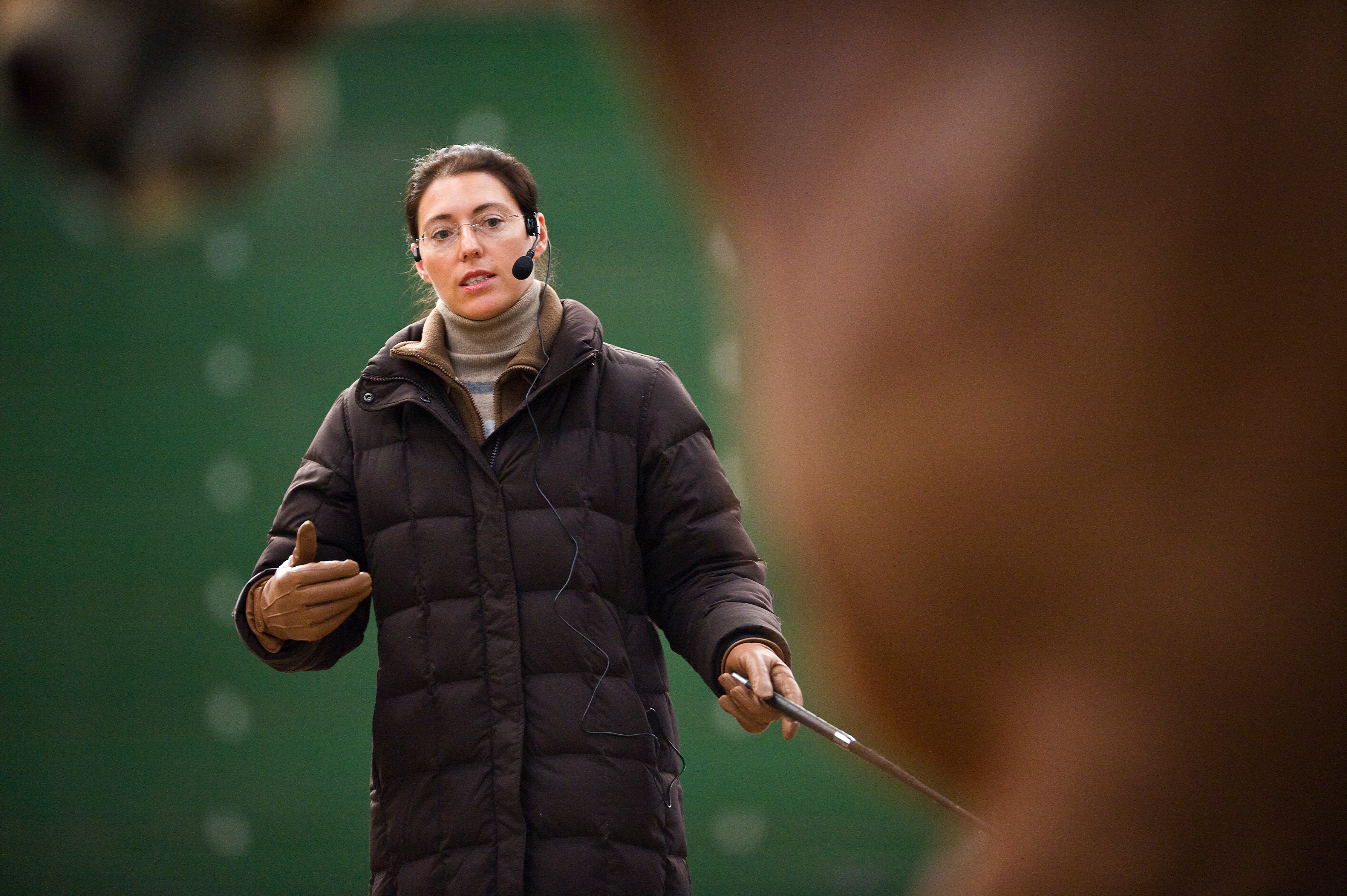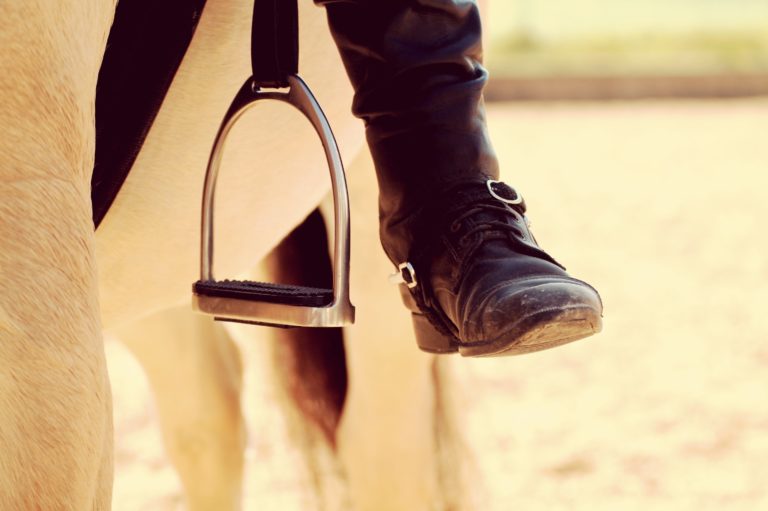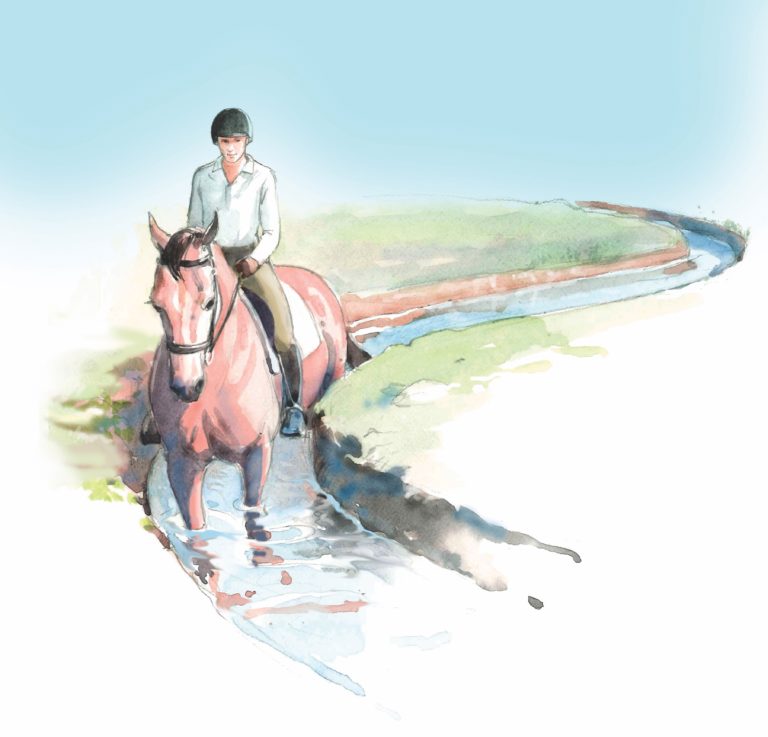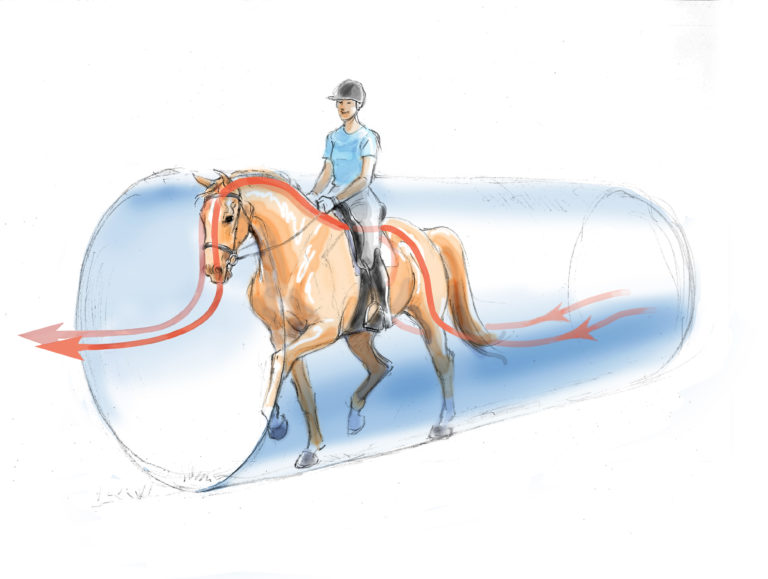In this series “My Toughest Training Challenge,” top trainers tell how they were temporarily stumped at some point in their careers. These tales are fascinating because most of us see only the finished product at a show or on a video and assume the training must have gone smoothly. Certainly the best riders make it look that way. The manner in which the toughest training challenge is met and solved is a lesson to all of us in persistence, patience and good horsemanship. In this article, European trainer Anja Beran, who has spent a lifetime studying classical equestrian ideals and applying them to training horses, tackles an often-stubborn problem with a surprising solution.
My toughest training challenge was an interesting case that taught me the value of listening to the old masters of dressage. Artus, a 16.3-hand, 7-year-old black Friesian stallion, arrived in my yard with the following problem: During training, he put almost his entire tongue out to the right side of his mouth. Although his tongue was not over the bit, he was still able to hang it outside his mouth. The stallion arrived with a special bit (a curb but without chain and cheeks) that his last trainer tried because he thought it would help keep the stallion’s tongue in place. In addition, the trainer used a strong Swedish noseband to close his mouth—all without any success.

I first saw the stallion being ridden by his owner, who had asked me to take a look. When I watched Artus, I saw a contracted horse that didn’t “speak” with his rider. By “speak” I mean that the horse was dead in his mouth. He reacted, but he didn’t chew on the bit, and so there wasn’t any communication between his mouth and the rider’s hand. I only saw orders going from the rider’s hand to the mouth of the horse—a one-way street.
One reason for this was the strong Swedish (crank) noseband, which made it impossible for Artus to move his mouth. It also produced a lot of pressure on his tongue, which he tried to escape. The second reason was that Artus’s back was completely stiff and contracted. With such a back, it is impossible for him to “speak” with the rider because all of his muscles are hard, which causes him to feel pain when ridden.
This was the situation when I started to ride Artus. Under me, I felt a horse that was completely out of balance with his weight on his shoulders. He was so heavy on my hand that it felt like I was carrying tons. He was almost immobile and very uncomfortable to sit on. He couldn’t bend his body well and the flexions were difficult for him. From the beginning, I started riding him without any noseband and with a simple, single-jointed snaffle. He had his tongue out, but I didn’t care about this or pay attention to it directly at this point because the riders before me had already worked on the symptoms without any success. Now it was up to me to find the reasons behind his problem and try to solve it. I assumed that the problem was caused by his stiff back and pursued this idea in my training.

I had been sure with Artus that my idea would work because I know that a horse starts to chew on the bit when his back is working. But how could he do this with his tongue out? Of course, if you get a 15-year-old horse with this problem, it will be almost impossible to fix. The horse will be too stiff, having worked for years with a bad habit, so you will never be able to get him really supple again. But Artus was young enough.
So I started to work him in the walk because he was running with long steps and a long and open back. Little by little, I got him to do a collected walk. I used lateral work with a view to his physical problems—specifically not being straight and on the shoulders. We worked in walk on small circles, doing shoulder-in, counter shoulder-in, leg-yielding, travers, renvers, half pass and pirouettes renversée.
Renversée is done at the walk—the hindquarters turn around the shoulders of the horse with the bending and flexion in the same direction in which the hindquarters are turning. You can do this exercise, for example, in the middle of a half pass. You fix the shoulders, turn the hindquarters around them and move forward again in half pass. It’s a brilliant exercise that was used a lot in the past. It makes a horse mobile, forward and really on his rider’s aids.
I did this exercise until I felt Artus becoming more supple, more mobile, less heavy on my hand and lighter on my leg. His tongue was still out, but I did gymnastics and flexion exercises every day. It was really hard work. You always have to move the stiff horse from one lateral movement to the next lateral movement. But suddenly, you begin to feel the horse getting more supple, and he starts to very shyly chew on the bit. Then you feel the way you are working is good and just needs to continue. You continue using less and less rein, giving with the reins, trying to use your seat more and so on—hard work both technically and mentally for a rider. You have to concentrate absolutely on the work, and you have to listen to the horse and his body during every step.
When Artus started to make better use of his body, I made him do all the lateral work in a light trot. This helped engage his hindquarters more and more and close his back. However, I never let him run or fall on his shoulders. He had to always work with his head and neck in a correct position. He was never forced into holding his head in a deep-and-low position. Instead, I allowed him to find the correct position to be in balance.
Artus’s tongue was still out most of the time, but sometimes when he started to breathe and to work his back with all his muscles, there were moments when he started to chew on the bit and leave his tongue inside. I felt very happy because this way seemed to be the right one—that his back was the key to resolving his problems. I had to work his back, put him in balance make him mobile and supple. All this made Artus start to chew on the bit. When a horse truly chews on the bit, his tongue will never come out.
A horse that starts to work well with his back will be engaged and will put his neck in a nice correct position. A horse that starts to be collected will not only begin to chew on the bit but to “speak” with his rider, responding to reins just touched by the fingers.
I continued along these lines day by day with a lot of gymnastics in lateral work in walk and trot. He had to bend his joints and use his muscles and his back. Of course, we had to always give Artus a lot of breaks with long reins to allow him to relax. That’s how good gymnastics are done: stretch and release the muscles alternately.
I also started to work in canter, doing many walk–canter–walk transitions. This made his back stronger. The lateral movements helped me deal with Artus’s natural asymmetry so he became more mobile and forward. Even though I worked Artus in slow movements most of the time, he was more forward. This means that he was following the rider’s aids better—forward doesn’t mean fast!
All these gymnastics prepared him, so the time had come to start with really collected work. A very important exercise at that point was piaffe, which I used to help him become stronger in the back and find his balance. This is the very reason why all horses in my yard are trained to do piaffe.
We first asked Artus to do some diagonal steps, still with a strong forward movement, to which he answered very well. If you want to use piaffe to help the horse, you need to start gently, without draw reins or anything similar, and without a closed Swedish noseband because to be collected, the horse should be able to chew. If he contracts his jaws, the neck will tense and so will the shoulders and finally the back. This makes a good piaffe impossible. It is not a question of bringing the horse between hand and leg, compressing him, or of putting him on the hindquarters. No. In piaffe, the horse should carry himself and be in balance. He should have the same weight on all four legs. Only then can he be brilliant.
In piaffe, Artus suddenly really started to chew on the bit, keeping his tongue inside during the entire exercise. This proved once more that the back was the reason for his problem. Little by little, he kept his tongue inside during other movements as well, and his expression started to change. He seemed to be less angry, more motivated and happy. From the beginning of the lesson, he chewed on the bit with his tongue inside. More and more, he started to depend on my seat and became more independent of my hand and the reins. He started to carry himself. The reactions to my aids became finer and faster.
This had been achieved within about three months. I then changed to a double bridle because I felt it would bring about an even finer communication and would enable me to collect Artus more and more. His reaction to the change was a surprise for me. Artus took to the bit and the curb without any problems. He has worked in lightness and in balance ever since, and the tongue has remained inside. Now his owner can use him for dressage and hacking without any problems.
Artus was the first horse I had in training with a tongue problem, but since then I’ve had several others come to me from the competition world with this same issue. The cause and the solution are always the same—the back!
I learned to listen to the old masters because of Artus. Xenophon had already said this about 2,400 years ago: “Anyone who would like to present their horse in such a way that it is strikingly beautiful must free themselves completely of any thoughts of pulling at the horse´s mouth with the reins … Most people think that this is the right way. What they achieve, however, is the precise opposite.”
There is a real drama today in training horses because what we need is patience and old knowledge, and both are almost gone. That’s why riders need things like draw reins, Swedish nosebands, hyperflexion or special shoes to train piaffe and passage. When I sometimes watch riders in modern warm-up places prepare their horses for a competition, I feel the words of the brilliant old masters are very up to date.
Horses like Artus show us that we should try to return to the art of classical riding because there is something going wrong in modern riding, and a different approach is feasible.
This article first appeared in the February 2012 issue of Dressage Today.

Anja Beran authored the book Classical Schooling with the Horse in Mind, a 21st century how-to guide to classical equitation, and the DVD series “Elegant Dressage Training.” When she was 15, Beran went to Portugal, where she worked intensively with Manuel Jorge de Oliveira (a disciple of the legendary Nuno Oliveira), who remains her mentor. At home in Germany, she spent 16 years training horses under the tutelage of Marc de Broissia. At her training facility, Gut Rosenhof, in Rudratsried, Bayern, horses of all breeds are sent to her and allowed to develop at their own speed, gently and according to the classical ideal of achieving horse-and-rider harmony (anjaberan.de/english).











